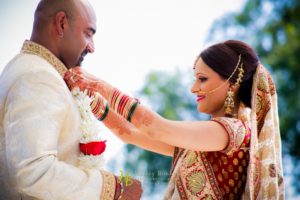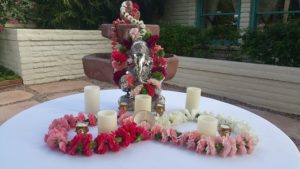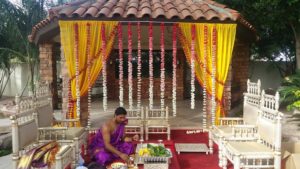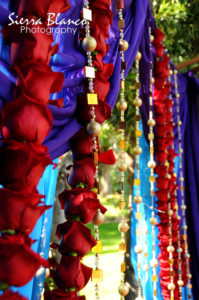When garlands come to mind, Varmala is what I think of first. Varmala is designed differently according to what Indian people believe.

For the Gujaratis, Varmala is the sacred red thread that goes around the bride and groom in only one loop. It is believed this thread ties the bride and groom together for life. In other parts of the India, Varmala is believed to be the garland of flowers the bride and groom wears. This is what we all know. In the mainstream world.

In ancient times, Varmala was meant to be in the bride’s hands to put onto the man she chooses to be her husband. It is said that a king would organize a special procession for his daughter called “swayamvar”, so the daughter can meet other kings or princes and choose her husband according to her likes and demands. Varmala plays a very significant importance to this tradition. It means that the princess welcomes this man into her life with love and respect.

Garlands are also referred to as Jaimala and some people say it is the same as Varmala. You can call it either way and everyone will know what you are referring to. Although, “Jai” means “hail” therefore Jaimala can also mean victorious garland and it is used for good wishes or welcoming victory from a battle.

Lastly, garlands are just garlands which can be used for decorations for weddings, pujas (prayers), and other special occasions like Diwali. Garlands are flowers that are strung together by a thread and can be hung behind a mandap to create a very traditional and elegant look or it can be hung against a wall as a backdrop against a god or a deity.

Photo Credits:
Sierra Blanco Photography, Harley Bonham Photography

